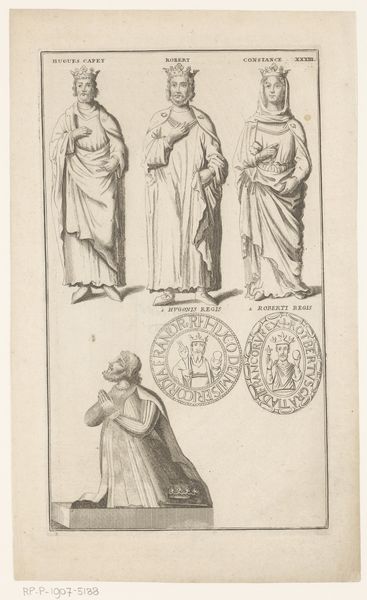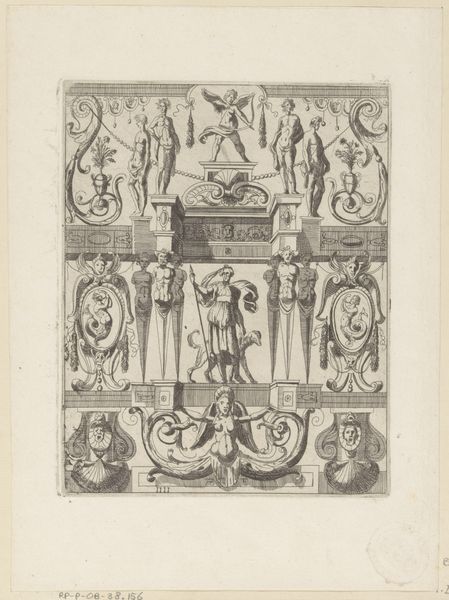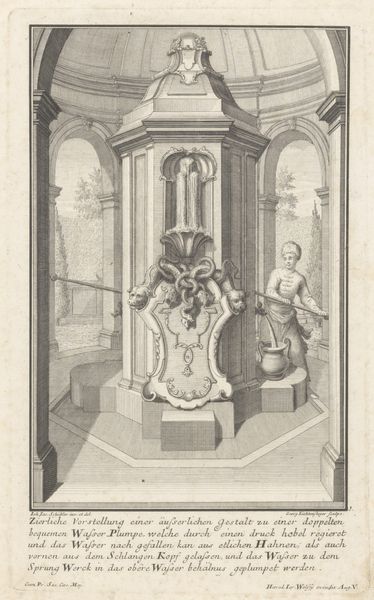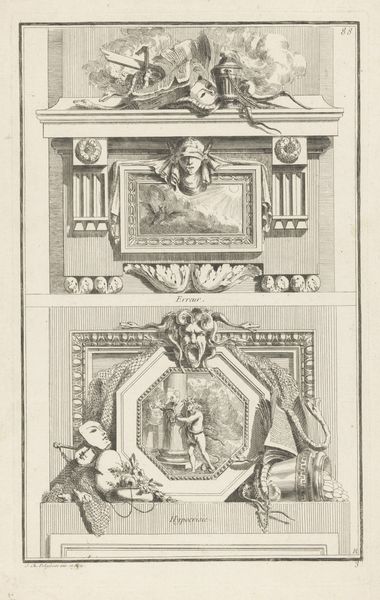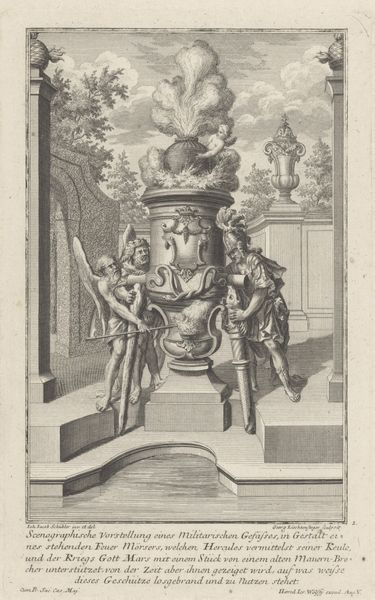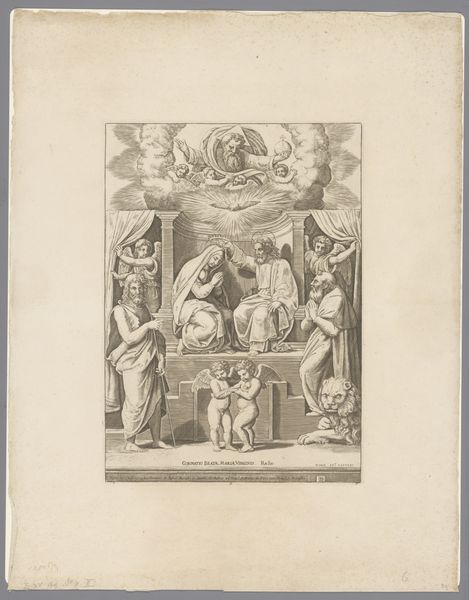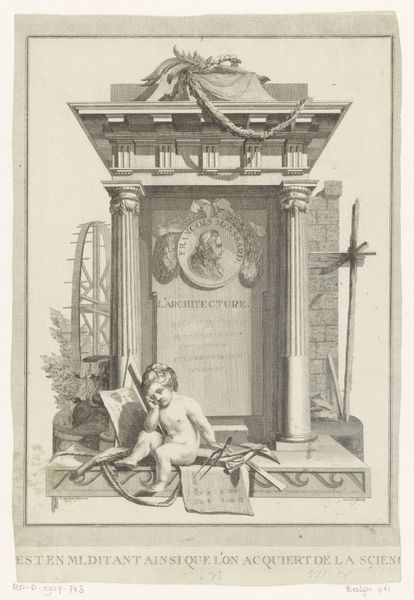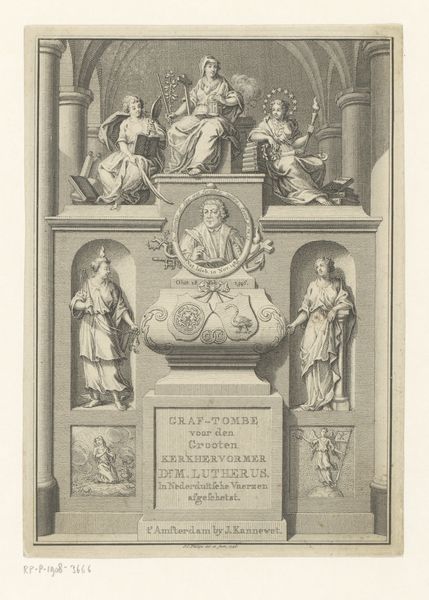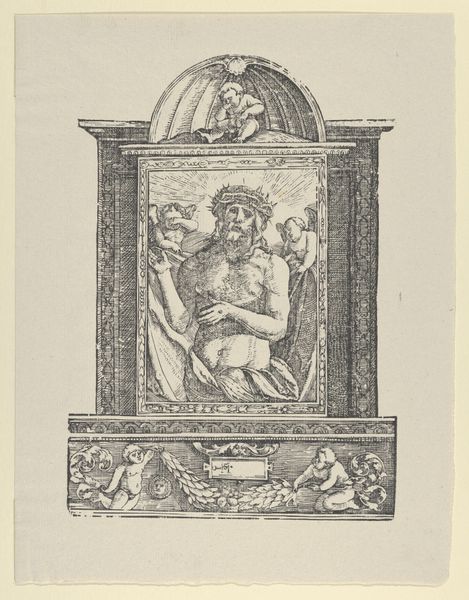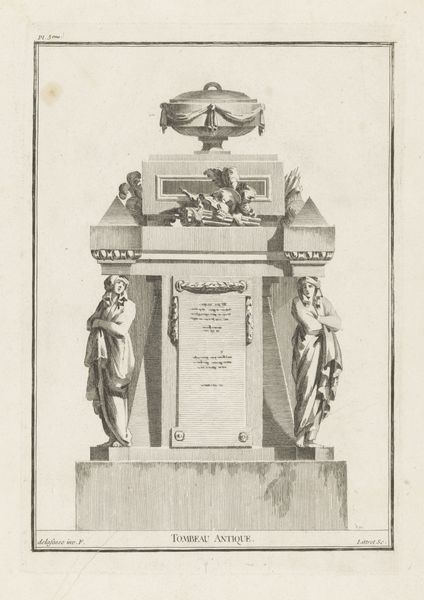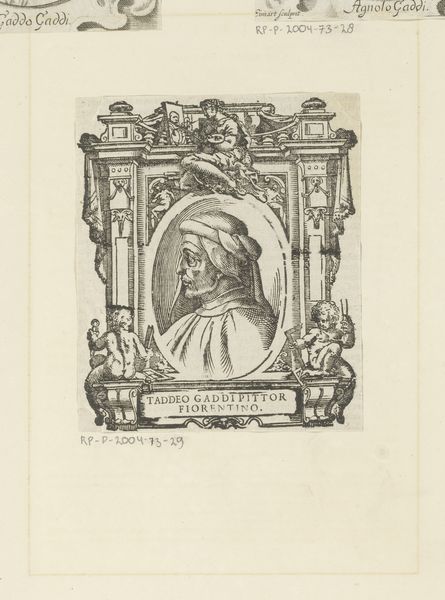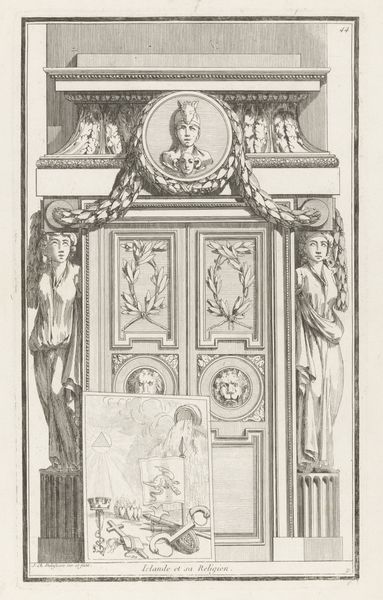
Twee portretten van koning Lodewijk IV en koning Lotharius 1729 - 1733
0:00
0:00
print, engraving
#
portrait
#
medieval
#
baroque
# print
#
traditional media
#
figuration
#
line
#
history-painting
#
academic-art
#
engraving
#
realism
Dimensions: height 322 mm, width 176 mm
Copyright: Rijks Museum: Open Domain
Dominique Sornique created these two portraits of King Louis IV and King Lothair sometime in the first half of the 18th century, using etching. The fineness of the etched lines allowed Sornique to capture the regal nature of the two kings. The printmaking process also allowed for the widespread distribution of these images. Etching is an indirect intaglio process, which requires an etcher to prepare a metal plate with a waxy, acid-resistant ground. The etcher then scratches an image into the ground, revealing the bare metal, which is then submerged in acid. The acid bites into the exposed metal, creating lines. The ground is removed, and the plate is inked, forcing ink into the bitten lines. Finally, the plate is pressed onto paper, transferring the image. The quality of the line work is evidence of the etcher's skill. The decision to represent Louis IV and King Lothair through the medium of etching speaks to the increasing industrialization of art production and the growing market for reproducible images. In contemplating this print, we should consider how materials, making, and context are essential to the work’s meaning. The mechanical, reproductive nature of printmaking democratized the portraits by making them accessible to a wider audience.
Comments
No comments
Be the first to comment and join the conversation on the ultimate creative platform.
